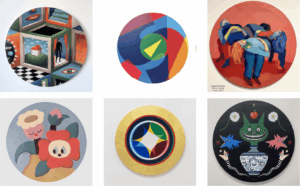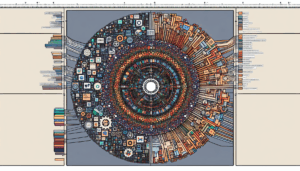Every interior designer knows that choosing the right colors for the interior of a house can be one of the most transformative decisions in any decorating project. Color has the power to influence the ambiance, the sense of space, and the mood of those who inhabit the space.
That is why the selection of colors is not just a matter of personal preferences; it is a process that requires reflection and planning to create a home that is visually appealing and functional.
Beyond the impact of color on the ambiance, every interior design professional takes into account 5 key points:
1. Interaction between materials and colors
Colors do not exist in isolation; they interact with different materials present in the space, such as wood, stone, metal, glass, or textiles.
For example, a dark tone can highlight the warmth of wood, while metallic colors can complement industrial details. Understanding the role that colors play in combination with different materials is essential to achieve the desired result.
2. Influence of artificial and natural light on color
Aside from natural light, artificial lighting also affects the perception of color. Different types of lighting, such as warm light, cool light, or LED light, can alter the appearance of the chosen tones.
Color also has an impact on energy efficiency. Brighter colors, which better reflect natural light, can help reduce the dependence on artificial lighting during the day, contributing to lower energy consumption and a more sustainable environment.
For example, a color can appear warmer under yellow light and cooler under white light. Interior designers must consider the type of lighting in each room to ensure that the selected color looks as expected under all conditions.
3. Color palette based on design styles

Each interior design style has its own characteristic color palette, which helps define the ambiance and personality of each space. Here are some classic examples:
- Minimalism: neutral tones, whites, grays, and blacks with small color accents.
- Scandinavian style: predominance of whites, soft grays, with touches of pastel colors.
- Industrial: dark colors, metallic grays, rustic browns, and warm tones details.
- Bohemian style: a mix of vibrant colors such as oranges, turquoises, fuchsias, and greens.
These recommendations help interior designers link their color choices to a broader design context.
4. Space zoning through color
A key technique for interior designers is color zoning, which allows visually dividing areas within an open space, such as a living-dining room. Using different colors for different functional areas helps create smooth transitions and delimit spaces without the need for physical walls.
In small spaces, light colors help create a sense of spaciousness, while in large spaces, darker tones can be used to make them cozier and more balanced. Additionally, using different colors on ceilings, walls, and floors can manipulate the perception of size and proportion of spaces.
5. Use of colors in commercial vs residential projects
Interior designers often work on both residential and commercial projects, such as restaurants, offices, and hotels. Color decisions vary between both types of projects: neutral and calm tones are usually used in homes, while bolder or corporate colors are preferred in commercial spaces to strengthen the brand identity.
Inspiration and resources for a good color choice

For those seeking inspiration to choose the best colors, having the right tools can be crucial. The new 98 Interior Colors Collection by Tollens is a carefully curated selection to facilitate color choice in interior projects.
This collection is divided into 42 timeless neutrals and 56 chromatic colors, organized in a way that makes it easy to visualize how they combine with each other and how they can transform a space. Additionally, each color includes information about its brightness level, allowing to choose the tones that best suit each room according to the lighting and sense of space needs.
Choosing the right color can make the difference between a common space and one that truly inspires. For interior designers, a strategic color choice not only beautifies the space but also enhances its functionality and emotional perception.
With tools like the Tollens 98 Interior Colors Collection, interior designers have a clear guide to make informed decisions that bring beauty, functionality, and sustainability to every corner of a home or commercial space. Explore professional collections like Tollens’ to effectively transform both homes and commercial spaces.
Referrer: Opendeco, decoration news in Spanish












